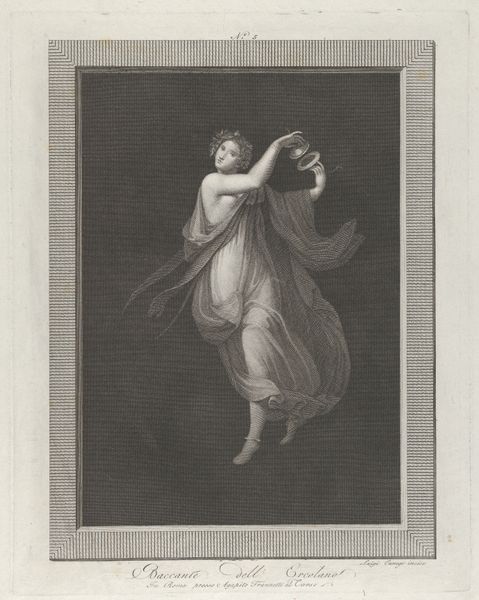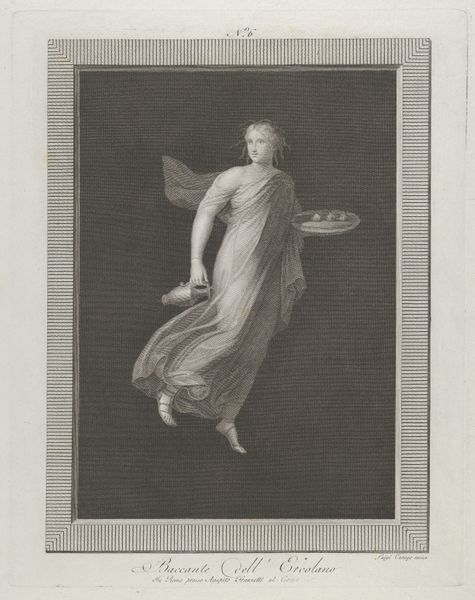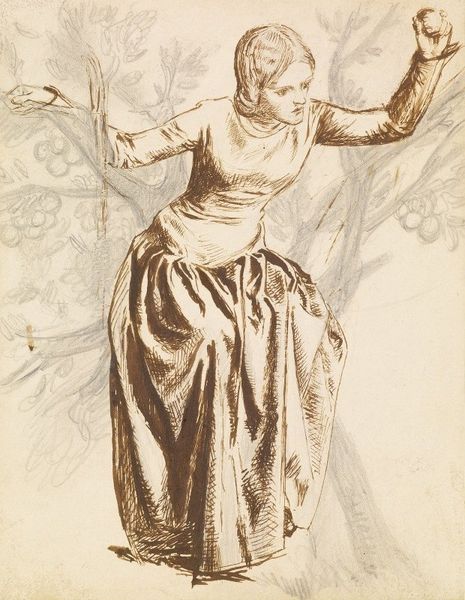
drawing, performance
#
portrait
#
drawing
#
performance
#
figuration
#
historical fashion
#
romanticism
#
genre-painting
#
history-painting
Dimensions: height 215 mm, width 327 mm
Copyright: Rijks Museum: Open Domain
Curator: Immediately striking is the isolation of this figure. The dark background almost swallows her. Editor: Yes, and yet the overall impression is one of graceful movement frozen in time. This drawing by Bartholomeus Ziesenis from 1812, titled "Danseres Annette Köbler, de pas-de-shawl uitvoerende"—"Dancer Annette Köbler, Performing the Shawl Dance"—captures a specific moment within a performance. It is really evoking something of the Romantic period. Curator: Absolutely. Consider the context: public performance becoming a subject for artistic documentation. This signifies the rising social status of performing arts, and, by extension, the artists involved. The theater's presence in Amsterdam in the early 19th century signals not just entertainment, but cultural identity formation. Editor: Precisely. Let’s look closer at Mademoiselle Köbler. Her dress, loosely based on classical styles, and the shawl are key props that signify the popularization of these exotic dances for a Western European audience, evoking a particular femininity. And it's crucial to address how European performance often took these orientalized dances and reframed them through a white, feminine lens. It feels rooted in exoticism, doesn't it? Curator: It raises interesting questions about cultural exchange and appropriation, of course. The “Pas-de-Shawl” itself implies an origin beyond Dutch borders. And I’d add that the very act of Ziesenis capturing this performer—essentially memorializing this particular rendition—reflects a societal desire to preserve moments of fleeting beauty or novelty, framing it through the Romantic lens of exoticism. Editor: It’s a tension we often see: the beauty versus the broader context of power dynamics and societal norms in these historical pieces. Still, this gives us an opportunity to reflect on the narratives we choose to uplift and whose voices get centered when we interpret works like these. Curator: Agreed. Understanding those layers is essential to unpacking what's actually taking place within these images—performance as politics, representation as commentary.
Comments
No comments
Be the first to comment and join the conversation on the ultimate creative platform.














